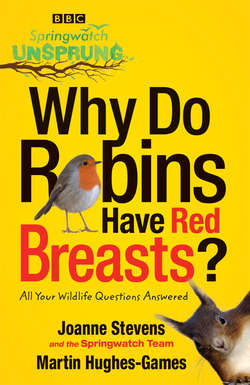Читать книгу Springwatch Unsprung: Why Do Robins Have Red Breasts? - Jo Stevens - Страница 21
Hard-Headed
ОглавлениеMy eight-year-old daughter, Lauren, wants to know why a woodpecker doesn’t break its beak when it hammers on a tree. Jenny
There are three species of woodpecker in the UK: the largest is the exotic-looking green woodpecker with its red crown and emerald plumage, often seen on the ground feeding on ants’ nests. Green woodpeckers rarely drum, but the black-and-white woodpecker species, the great spotted and lesser spotted, both hammer out their clarion call. During spring, these woodpeckers rapidly drum their beaks against trees, telegraph poles or even metal structures to attract a mate and claim their territory. They choose whichever substance will resonate and amplify their drumming the most.
Woodpeckers can strike their beaks up to 40 times per second, at a speed of 6 metres per second, and each time their beak hits the trunk it experiences a force of up to 1,000 times gravity. That’s equivalent to a human hitting a wall face first at up to 22km/h, which would cause a nasty concussion, if not worse. So how does the woodpecker not get a headache or break its beak?
Fortunately, woodpeckers’ beaks and skulls are well adapted to absorb the shockwaves and deal with those forces. Firstly, the brain fits very snugly into the skull so there is little room for it to bump around. Conversely, human brains are suspended in fluid and if we hit our heads the brain sloshes around, bouncing off the inside of the skull, which gives us concussion.
Secondly, the upper part of the woodpecker’s beak is longer than the bottom half, which helps to disperse the forces. The beak can also be quite flexible so it changes shape as it hits the trunk and absorbs some of the impact. The bones of the skull are very spongy with a fine, mesh-like lining that acts as a shock absorber. Woodpeckers also have a special hyoid bone that loops around under the skull acting like a safety belt for the brain. These birds also have strong, thick neck muscles that support the head and power the drumming. All these adaptations are certainly put to the test during the breeding season, when a male looking for a mate may drum up to 600 times a day.
